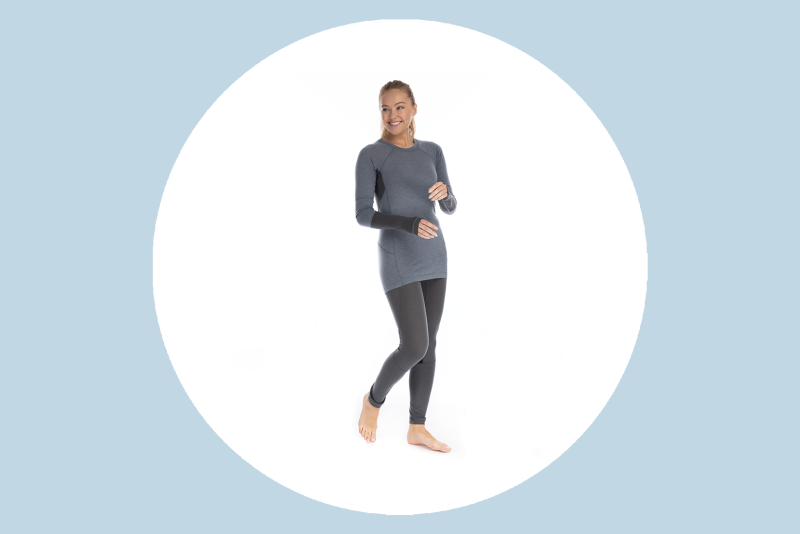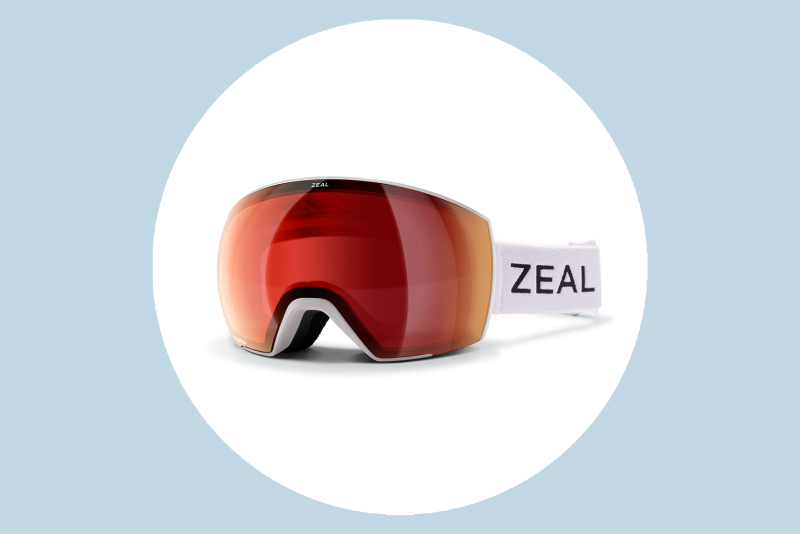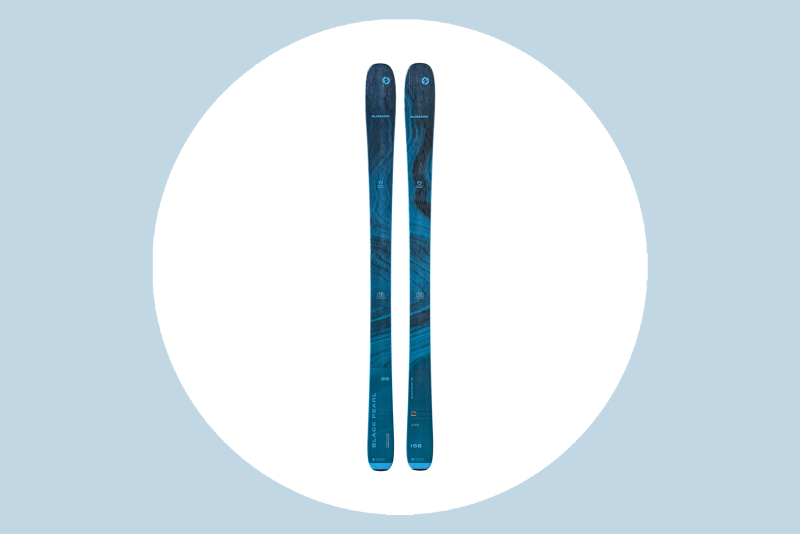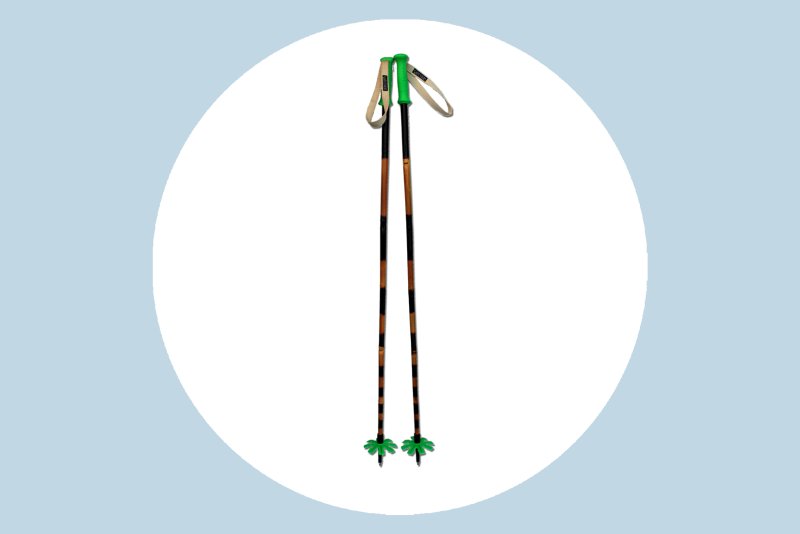You’ve nailed down which ski resort best fits your slope style, booked flights, and are no doubt eager to point your planks downhill and get ripping. There’s just one last aspect to consider: all of the ski gear necessary to make the time in your winter wonderland of choice worthwhile.
Before you start browsing the goods at your local REI, take stock of the items you already have in your closet and garage. In light of the United Nations’ recent announcement about the dire effects of climate change, it’s time we all took steps to buy less. Could you squeeze another season out of your parka? Maybe your ski pants work perfectly except for an easy fix like a busted zipper (head to your local tailor) or small tear (try these patches). Depending on where you live, there might be second-hand stores with great new-to-you gear.
If you’re relatively new to skiing and/or only go once or twice a year, then renting boots, skis, and poles will likely be your best bet from both a financial and sustainability perspective. Many resorts have on-site rentals in their base area, making it easy to get gear steps from the slopes. Some shops (as well as online retailers like kitlender.com) will rent apparel along with the hard goods.
Sometimes though, given usage expectations and specialized needs, buying new ski gear is simply the way to go. Thankfully, the outdoor industry is taking a variety of steps at the manufacturing level to make ski apparel and equipment a whole lot greener. Some brands incorporate recycled, repurposed, and renewable materials in their products. Others partner with environmental nonprofits, avoid harmful chemicals like PFCs, run their factories on wind or solar, and attain certifications like B Corp status (a commitment to high social and environmental performance) and Bluesign approval (confirmation that textile products are safe for the world and its people). A couple of powerhouses do most of the above. Best of all, they’re making these Mother Nature–approved advancements without compromising on the warmth, waterproofing, breathability, or overall quality of the gear.
So, if it’s time to pass your oldies-but-still-goodies on to another skier, treat yourself to these Earth-friendly options.

The men’s Patagonia Insulated Powder Town Jacket in Cabin Gold
Courtesy of Patagonia
1. Insulated Ski Coat: Patagonia Insulated Powder Town Jacket
Buy now: Women’s, $399, patagonia.com; Men’s, $399, patagonia.com
From its role in founding 1% for the Planet to this year’s announcement that its founder transferred his ownership—valued at $3 billion—to a newly founded trust and nonprofit that will combat climate change, certified B Corp Patagonia has long lived out its environment-first ethos. And it will in perpetuity: Profits not reinvested back into the business will be paid as dividends to protect the planet. The Insulated Powder Town Jacket, which is Fair Trade–Certified sewn and PFC-free while also featuring Thermogreen 100 percent recycled polyester insulation for targeted warmth, is another example. We like this waterproof, windproof jacket for especially cold days on the hill, though if temps warm up during your post-lunch laps, pit zips provide an easy venting solution.

The men’s Norrøna Lofoten Gore-Tex Jacket in Olive Night
Courtesy of Norrøna
2. Ski Jacket: Norrøna Lofoten Gore-Tex Jacket
Buy now: Women’s, $599, norrona.com, backcountry.com; Men’s, $599, norrona.com, backcountry.com
If you’re hitting the lifts on a warmer day—or if you’re earning those turns and skinning up the mountain—you’ll want to wear a lighter shell, an uninsulated outer layer that’s still waterproof and windproof. The Lofoten Gore-Tex Jacket is just the thing. Made with top-of-the-line Gore-Tex Pro and boasting articulated elbows, a zip-off powder skirt, taped seams, and numerous other bells and whistles, this piece is well worth the (somewhat daunting) price. Plus, more than 50 percent of its synthetic fibers are recycled, and every year, the nearly 100-year-old Norwegian brand donates 1 percent of sales to causes and organizations working to promote sustainability and environmentally friendly initiatives.

The women’s Blackcrows Ferus Mechanical Pant in light blue
Courtesy of Blackcrows
3. Snow Pants: Blackcrows Ferus Mechanical Pant
Buy now: Women’s, $420, black-crows.com; Men’s, $420, black-crows.com
With headquarters in the Shangri-la of skiing, Chamonix, Blackcrows knows how to build gear that excels in the white stuff—and it does so with a green slant. Its Ferus Mechanical Pant (available in a warmer bib silhouette for women and a standard pant profile for men) includes PrimaLoft Black Eco and 100 percent recycled lining that’s silky soft to the touch. Reinforced patches of abrasion-resistant polyester on the inner ankle and around the bottom hem protect against wear and tear from bindings and boots.

The men’s Cotopaxi Teca Fleece Full-Zip Jacket in Mars Landing
Courtesy of Cotopaxi
4. Fleece Midlayers: Cotopaxi Teca Fleece Full-Zip Jacket
Buy now: Women’s, $110, cotopaxi.com; Men’s, $110, cotopaxi.com
Carbon neutral and B Corp–certified Cotopaxi is another heavy-hitter when it comes to eco-friendly outdoor wear. Snuggle into its Teca Fleece Full-Zip Jacket as a great mountain-ready midlayer. We dig its flashy colors, recycled fleece, repurposed polyester taffeta makeup, and the grin-inducing llama logo.

The women’s Mountain Hardwear Ghost Whisperer/2 Hoody in Black Paintstroke print
Courtesy of Mountain Hardwear
5. Down Midlayers: Mountain Hardwear Ghost Whisperer/2 Hoody
Buy now: Women’s, $350, mountainhardwear.com; Men’s, $350, mountainhardwear.com
We’ve already sung the praises of Mountain Hardwear’s Ghost Whisperer UL Jacket as a travel-ready packable down option, but we love the updated—and importantly, more sustainably made—version for frigid days on piste. The Ghost Whisperer/2 features 800-fill, RDS-certified down insulation (read: the ducks and geese giving up their feathers were treated humanely), and all of the solid colors in the lineup are made with 100 percent recycled nylon.

The women’s Artilect Goldhill 125 Zoned Crew and Legging in Ash/Blue
Courtesy of Artilect
6. Base Layers: Artilect Goldhill 125 Zoned Crew and Legging
Buy now: Women’s crew, $130, artilect.studio; Women’s legging, $130, artilect.studio; Men’s crew, $130, artilect.studio; Men’s legging, $130, artilect.studio
There’s a lot of reasons why wool is the go-to base layer material for many snow bunnies. It holds in heat, wicks sweat away from the body, and is naturally antimicrobial (so you can get funky come après time without smelling funky). Merino wool in particular has an oh-so-soft hand feel. Artilect took this against-skin staple and worked with manufacturers to improve it. The result, Bluesign-approved Nuyarn, dries five times faster and is 35 percent stretchier and 50 percent more durable than conventional ring-spun merino. And it uses 30 percent fewer resources to create. Find Nuyarn in Artilect’s base layer line, including its Goldhill 125 Zoned Crew and Legging for women and men.

The men’s Montane Duality Waterproof Gloves
Courtesy of Montane
7. Ski Gloves: Montane Duality Waterproof Gloves
Buy now: Women’s, $109, us.montane.com; Men’s, $109, us.montane.com
Made with 55 percent recycled PrimaLoft Gold insulation, goat leather hits in the palm and fingers, and a brushed microfleece lining, Montane’s Duality Waterproof Gloves are designed to protect hands from the elements. Meanwhile, their exterior PFC-free DWR coating protects the Earth from exposure to harmful chemicals. If you prefer mitts, go with the brand’s Anti-Freeze Packable Down Mittens ($85), which feature recycled materials and PFC-free DWR.

The Salomon MTN Lab Unisex Helmet in Rainy Day
Courtesy of Salomon
8. Helmet: Salomon MTN Lab Unisex Helmet
Buy now: $200, salomon.com
Long gone are the days of shredding (unsafely!) in just a pom-pommed beanie. From Aspen to the Alps, ski helmets have become the norm. Powder-seekers going green should consider the lightweight MTN Lab Unisex Helmet, which features a patented technology that maximizes energy absorption and protects the head from oblique and vertical shocks. It also includes recycled materials plus a 100 percent natural merino liner in its construction.

The unisex Zeal Optics Hangfire goggles in Fog
Courtesy of Zeal Optics
9. Goggles: Zeal Optics Hangfire
Buy now: $129–$249, zealoptics.com
Crafted by 1% for the Planet member Zeal Optics and assembled in a factory that uses solar energy to power operations (and that recycles all fluids, water, and excess frame materials), the Hangfire goggles also feature a strap made from renewably sourced, bio-based yarn. Order a pair online, and they’ll arrive in packaging that can be entirely recycled. So yes, Mother Earth approves of these peeper protectors. Given their rimless design, impressive peripheral field of view, helmet compatibility, and polarized lens option, we think you will too.

The Icebreaker Unisex Merino Flexi Chute neck gaiter in black
Courtesy of Icebreaker
10. Neck Gaiter: Icebreaker Unisex Merino Flexi Chute
Buy now: $30, icebreaker.com
Your helmet keeps your crown and ears cozy; your goggles cover your eyes and the bridge of your nose; and your parka likely warms part of your neck. Even with all of these defenses, on especially cold days when each flying flake impacts your face like a pinprick, you’ll want an extra layer to pull up over your cheeks. Trust us. For an eco-friendly option, choose Icebreaker’s Unisex Merino Flexi Chute, which is sourced entirely from a natural and renewable material: wool. Want to know more about how the brand overall strives for sustainability? Icebreaker’s annual transparency report gets into the nitty-gritty of its business practices, supply chain, materials, and company goals.

The unisex Smartwool Ski Intraknit Over the Calf Socks in black
Courtesy of Smartwool
11. Ski Socks: Smartwool Ski Intraknit Over the Calf Socks
Buy now: $33, smartwool.com
Unless you’re a fan of toe-sicles, do not wear cotton socks on the ski hill. Wool, possibly with some recycled nylon for added durability and some elastane for stretch, should be your go-to for this layer as well. Smartwool’s Ski Intraknit Over the Calf Socks tick these boxes, and the brand is committed to Earth-friendly practices too, including going “climate positive” by 2030 with 100 percent regenerative materials and products that can be fully recycled. Bonus: More than 90 percent of Smartwool’s wool is sourced from ZQRX-certified growers who work toward animal welfare, sustainability, and social responsibility by supporting regenerative agriculture practices.

The women’s Black Pearl 88 skis
Courtesy of Blizzard
12. Skis: Blizzard Black Pearl 88 and Brahma 88
Buy now: Women’s, $650, blizzard-tecnica.com, rei.com; Men’s, $700, blizzard-tecnica.com, rei.com
If you ski enough to make buying your own skis worth the cost, consider the Black Pearl 88 for her and the Brahma 88 for him. Designed for intermediate- to advanced-level skiers, these approachably priced planks can tackle both groomer runs and powder stashes with finesse. And they’re constructed in a 20 percent solar-powered, 80 percent hydro-powered factory. Note: The Brahma carries a slightly higher sticker price because it’s made with two sheets of metal compared to the Black Pearl’s single sheet.

The men’s Scarpa 4-Quattro SL ski boot in black/orange
Courtesy of Scarpa
13. Ski Boots: Scarpa 4-Quattro SL
Buy now: Women’s, $699, us.scarpa.com, rei.com; Men’s, $699, us.scarpa.com, rei.com
That ski boots carry a hefty price tag is not up for debate. Neither is the fact that poor-fitting ski boots will ruin any day on the slopes. So, if you can stomach the hit to your wallet, invest in a pair of your own. Scarpa, which has started the process of becoming a B Corp, is one of the few brands offering an environment-aware option in this category. The solar panels installed on its buildings save 320 tons of CO2 emissions per year, yet more specifically, the 4-Quattro SL ski boot shells are made from Pebax Rnew, a bio-based polymer created using oil from the castor plant (instead of petroleum).

For an extra $22, the original Grass Sticks ski poles also come with a torched ringtail pattern for a little extra flair.
Courtesy of Grass Sticks
14. Ski Poles: Grass Sticks Original
Buy now: $110, grasssticks.com
Bamboo is more than a panda snack. If you ask the makers of Grass Sticks, the renewable resource they claim absorbs more CO2 and produces more oxygen than any other plant also makes pretty darn rad ski poles. Why? Well, its tensile strength rivals that of steel; its compressive strength is greater than concrete; and unlike the metals most ski poles are made from, it isn’t mined from the Earth. Customize your pair with a 100 percent recycled polyester strap.

The unisex CamelBak Powderhound 12 Hydration Pack in Blue Mist/Black
Courtesy of Camelbak
15. Backpack: CamelBak Powderhound 12 Hydration Pack
Buy now: $110, camelbak.com
As we noted in our guide to high-elevation environments like Colorado’s, drinking plenty of water is vital to keeping altitude-induced headaches (or worse, full-blown altitude sickness) at bay. Yet who wants to carry a clunky water bottle around in their ski coat pocket or stop between every run for sips at the water fountain? One handy solution: a Powderhound 12 Hydration Pack from POW partner, CamelBak. This sleek backpack houses a two-liter water reservoir easily accessed via an insulated tube and it’s made with PFAS-free DWR and without PFCs.








